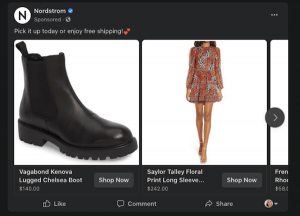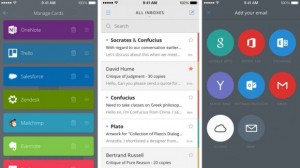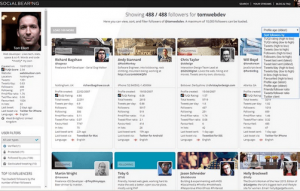August 2, 2016

Millions of us visit the doctor’s office every year for a checkup. The doctor asks us a series of questions, he or she takes our temperature, checks our heart rate and other vital signs, and performs a series of tests to ensure that we are healthy and active.
The Benefits of a Strong Mid-Year Checkup
The doctor will check any problem areas and ensure we’re following a proper diet and exercise regimen, and taking our medications as we’re supposed to. If we get checkups regularly, then the process is usually short and painless because we’re taking proactive steps to stay (or become) healthy.
This semi-annual checkup is a common practice that’s ingrained in our lives because we see the value in catching potential problems before they make us ill… or before it’s too late to get our health back on track.
You may be wondering what going to the doctor for a mid-year checkup has to do with customer success. There’s a very strong parallel, actually.
Increase Customer Health with a Strong Mid-Year Checkup Process
If left to their own devices without a regular checkup, customers and Customer Success Managers (CSMs) can go on about their days being reactive to problems that may arise, keeping busy with the demands of their jobs without fully stopping to evaluate the current environment. Because of this, it’s important for customer success executives to pause the daily hustle of the team and institute a checkup with CSMs to ensure they are strategic with their accounts and to check up with customers to catch any gaps before it’s too late.
How Often Should Customer Success Leaders Conduct Checkups?
The natural cycle for conducting check-ups with the CSM team is on a quarterly basis, or every 3 months depending on the fiscal calendar of the company. While it’s helpful to go more in depth at the end of the second quarter (mid-year) and the end of the year, it makes sense to conduct a simple checkup even after the first and third quarters, too. As mentioned earlier in the post, if checkups are regular in their timing and not ad hoc or missed, then it becomes second nature to stop and evaluate; eventually the process itself will become shorter and more intuitive.
4 Focuses of a Mid-Year Checkup for Customer Success Executives
1. Renewals & Upsell Status
Questions to Consider:
- Is the CSM on track to achieve their renewal numbers?
- Does the CSM have a renewal and/or upsell plan for each customer?
- Has the CSM last any accounts since the last check up? If so, why?
- Is the CSM building high and wide customer relationships?
- Does the CSM have a strong pulse on customer metrics?
For customer success executives, it’s important to sit down with CSMs during this mid-year checkup and map out their current customer list and talk through how each account is doing. Are their customers healthy? Have any changes occurred in the account? Are they on track for renewal?
The responses to the questions above will give you a quick gut check to ensure everything is on track and customers are progressing through their journey with your product or services. As an added benefit, this review exercise will help you maintain a close connection with CSMs on the ground and ensure they see you as a resource instead of an out-of-touch executive.
Often times CSMs are so caught up in their daily roles and goals that it’s easy to get side tracked with the here and now instead of planning for the long term future of customers. Having a proactive discussion about each account will ensure that the CSM doesn’t lose sight of the end goal: good customer health and consistent growth.
2. Customer KPIs & Metrics
Questions to Consider:
- Are customers reaching their goals and achieving their KPIs?
- What is the overall health of customers?
- Are some customers achieving better results than others? Why?
What are the key metrics you monitor on a quarterly and annual basis? At the end of each quarter and especially during the mid-year checkup, it’s imperative to reset the entire CSM team on internal success metrics and KPIs such as renewal rate, product usage, upsell quotas, and customer satisfaction metrics. Every member of the customer success team should thoroughly understand how their team measures success, as well as how the team as a whole is performing. Did the team reach their goals for the first two quarters? If not, what were the reasons?
In addition, the mid-year checkup presents a prime opportunity for customer success executives to reach out to customers directly and ensure they are on track with their own KPIs and metrics and let them express feedback directly. If customers aren’t successful with your product or service, then knowing sooner rather than later is key so your team can work to remedy any negative situations. On the other hand, if customers are supremely happy with the results they are achieving, it’s beneficial to hear that firsthand.
3. Warning Signs & Red Flags
Questions to Consider:
- Are there similarities between customers that have not renewed?
- Have there been product or service issues?
- Have you had any CSMs leave? If so, how are transitions progressing?
- Are there common themes among CSM frustrations or suggestions?
- Are there common themes among customer frustrations or suggestions?
While red flags and warning signs can occur at any time and should be addressed as they happen, the mid-year checkup is a good time to address any overarching issues together as a team. Have there been product or service difficulties that have affected multiple customers? Have any CSMs left the team or transferred customers? What about common frustrations from either customers or CSMs? Tackling large problem areas together can foster teamwork and a “can do” attitude – especially when lead by a customer success executive who is invested in a positive outcome.
In addition to overarching warning signs or red flags that affect the entire team, have any problems with specific customer accounts occurred during the past quarter? If so, how is the CSM working to remedy the issues and can you help in the process? Reviewing issues during a mid-year checkup will ensure that you maintain a strong pulse throughout the process of resolution.
4. Second Half of Year Planning
Questions to Consider:
- Does your CSM team have a plan for the remainder of the year?
- How are other departments included in the plan (marketing, sales, admin, etc)?
- Are there major adjustments that need to be made? If so, how will they change the plan?
Perhaps the most important aspect of the mid-year checkup is looking forward to the second half of the year. So often we get caught up in reviewing what has been and past metrics that it can be challenging to lift our heads and look ahead to the next 3 to 6 months. While it may seem impossible to predict the future – especially in a rapidly changing environment that evolves daily – it’s important to set metrics and KPIs that each CSM can understand and own (even if they may change slightly throughout the rest of the year).
During one-on-one sessions with CSMs, review the overall customer success team plan and ensure each CSM has an individual plan that maps to the overarching plan. Are other departments integral to success? For instance, will marketing be involved in capturing customer success stories or planning out and executing customer events? Does the HR or finance team need to understand any upcoming changes? The mid-year checkup is a perfect reset for all departments across the organization, so be sure that each department has a thorough understanding of how they are needed the following quarters, and what success looks like for your customers.
How Are You Preparing For a Mid-Year checkup?
Is your customer success team prepared for the rest of the year? Do your CSMs know what the most important metrics are, and how the team is progressing towards them? The mid-year checkup presents a prime opportunity to pause and reflect on the first half of the year and ensure that a solid plan is in place for the remainder of the year that not only sets the customers up for success, but the CSM team as well.
Business & Finance Articles on Business 2 Community(96)
Report Post







